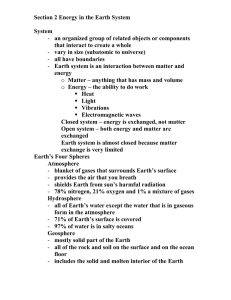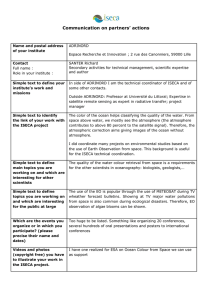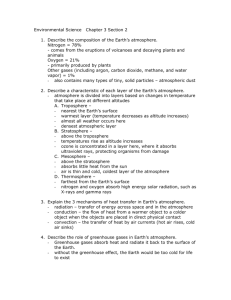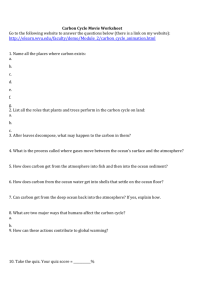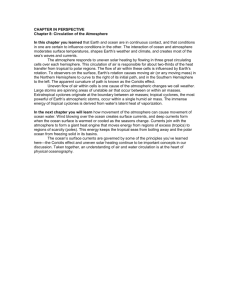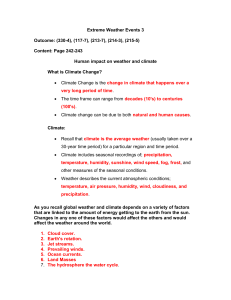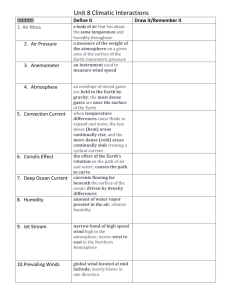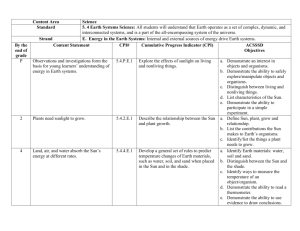userfiles/63/my files/i can learning target template for earth science
advertisement
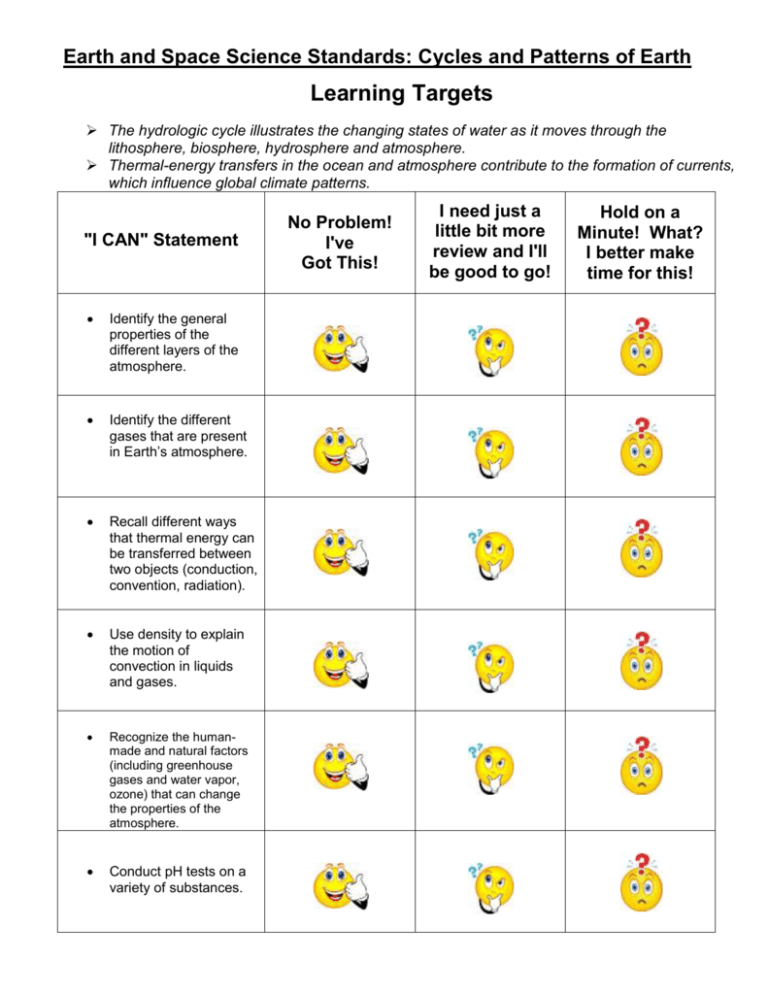
Earth and Space Science Standards: Cycles and Patterns of Earth Learning Targets The hydrologic cycle illustrates the changing states of water as it moves through the lithosphere, biosphere, hydrosphere and atmosphere. Thermal-energy transfers in the ocean and atmosphere contribute to the formation of currents, which influence global climate patterns. "I CAN" Statement Identify the general properties of the different layers of the atmosphere. Identify the different gases that are present in Earth’s atmosphere. Recall different ways that thermal energy can be transferred between two objects (conduction, convention, radiation). Use density to explain the motion of convection in liquids and gases. Recognize the humanmade and natural factors (including greenhouse gases and water vapor, ozone) that can change the properties of the atmosphere. Conduct pH tests on a variety of substances. No Problem! I've Got This! I need just a little bit more review and I'll be good to go! Hold on a Minute! What? I better make time for this! Connect acidity and alkalinity values to the natural world (water, soil, and air quality). Recognize that the sun is the source of energy that drives the hydrologic cycle. Identify the changes in thermal energy as water changes state in the hydrologic cycle. Describe how the sun is a major source of energy for wind, air and ocean currents. Compare and describe patterns found in the ocean currents, atmosphere and climate (e.g., how differences in temperature cause air or water to move). Map and document specific current patterns in the ocean. Predict global climate patterns based on my knowledge of heat transfer and ocean currents.
